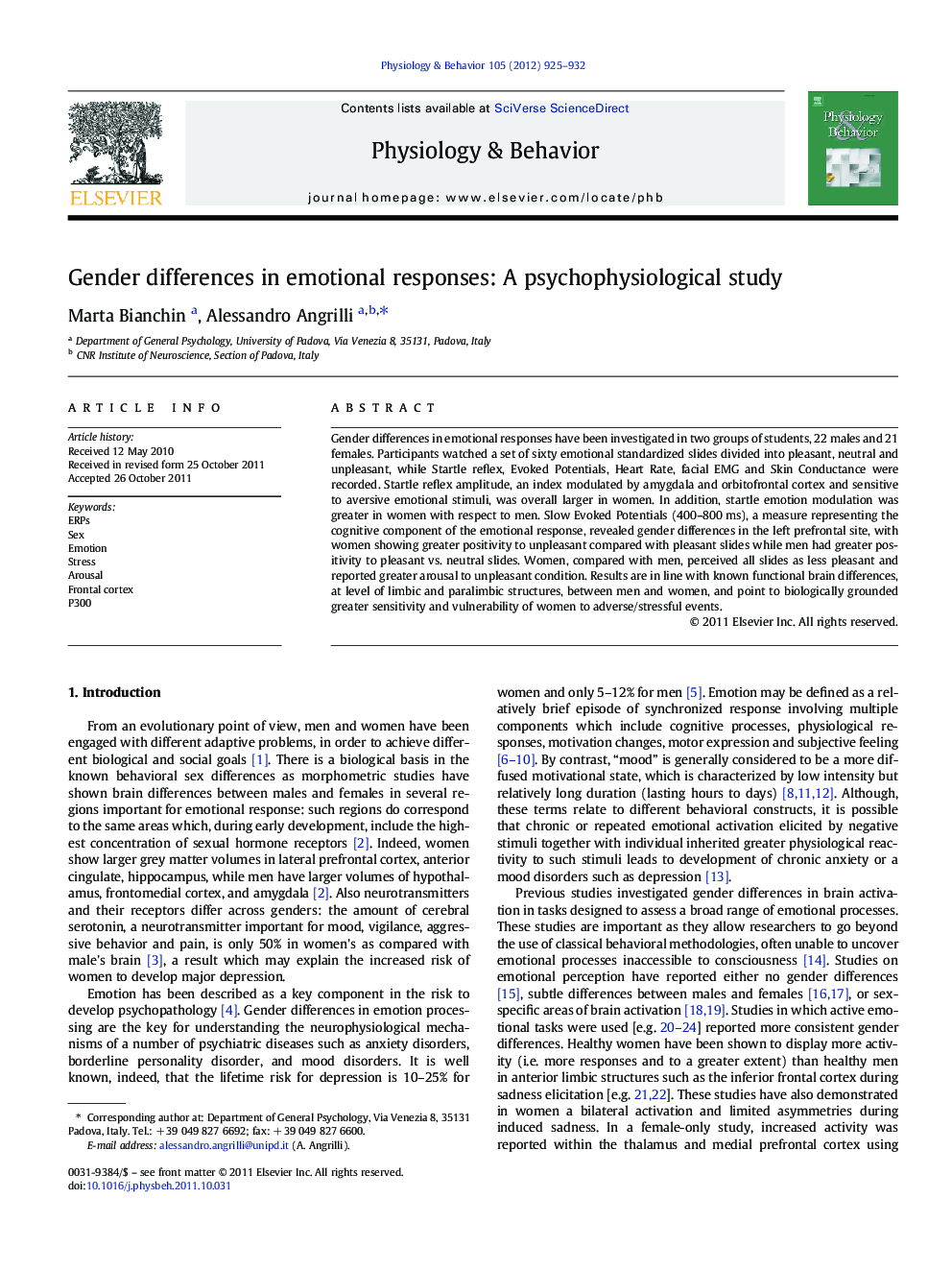| Article ID | Journal | Published Year | Pages | File Type |
|---|---|---|---|---|
| 5925342 | Physiology & Behavior | 2012 | 8 Pages |
Gender differences in emotional responses have been investigated in two groups of students, 22 males and 21 females. Participants watched a set of sixty emotional standardized slides divided into pleasant, neutral and unpleasant, while Startle reflex, Evoked Potentials, Heart Rate, facial EMG and Skin Conductance were recorded. Startle reflex amplitude, an index modulated by amygdala and orbitofrontal cortex and sensitive to aversive emotional stimuli, was overall larger in women. In addition, startle emotion modulation was greater in women with respect to men. Slow Evoked Potentials (400-800Â ms), a measure representing the cognitive component of the emotional response, revealed gender differences in the left prefrontal site, with women showing greater positivity to unpleasant compared with pleasant slides while men had greater positivity to pleasant vs. neutral slides. Women, compared with men, perceived all slides as less pleasant and reported greater arousal to unpleasant condition. Results are in line with known functional brain differences, at level of limbic and paralimbic structures, between men and women, and point to biologically grounded greater sensitivity and vulnerability of women to adverse/stressful events.
⺠In this study emotional responses to 60 slides were measured in 22 men and 21 women. ⺠Indexes included Arousal and Valence self-reports, startle reflex, Evoked Potentials. ⺠Women showed greater startle reflex and aversive-induced startle modulation than men. ⺠Women exhibited larger Slow Evoked Potentials to unpleasant vs. pleasant slides. ⺠Results point to higher biological vulnerability of women to adverse/stressful events.
